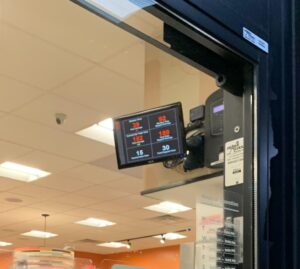If you’re only using one channel to generate sales, you may be facing extinction.
I bet you’ve heard some of these statements:
- “Our customers aren’t tech-savvy.”
- “Face-to-face is how we sell.”
- “Our products are too complex for online sales.”
- “Inside sales is too impersonal.”
- “We don’t want to upset our sales people with a new sales channel.”
I’ve heard these and many more excuses plenty of times dating back to the late 90’s when companies I worked for were adding new sales channels. I could understand then but can’t understand it now…and I still here these things now. I’m not sure whether these statements come from a place of fear or misunderstanding or inability to adapt to change but they’re all wrong.
The simple truth is that B2B buyers are quickly following the path of their B2C buying brethren in accelerating their adoption of all sales channels (and growing preference for self-serve), driven mostly by the need for speed, certainty, simplicity and time conservation during the business day. Forrester, McKinsey, Gartner and many other organizations cite the dramatic shift in customer behaviors and the urgent need for all organizations…especially B2B…to adapt or die.
Today’s B2B customers know how to gather their own info, comparison shop, form their own truths, spot BS from a mile away, conserve time and minimize their risk of a bad decision before engaging anyone for the sale.
We shouldn’t need research to validate what I call the “blinding flash of the obvious”. But, if you need data:
- Gartner reports that only 17% of the B2B sales journey is spent with direct contact with a sales representative.
- 65% of the workforce are Millennials and Gen-Z’ers who’ve grown up with social media, search engines and on-line reviews. They’re digital-first buyers and 44% prefer no interaction at all with a sales representative in a B2B setting.
- 77% of B2B buyers said they would feel comfortable spending over $50,000 in a single online transaction; 35% said they would spend over $500,000.
- More than 90 percent of B2B sales organizations viewed today’s B2B omnichannel reality as equally or more effective in reaching and serving customers than it was before COVID-19.
If you only believe in or use a fields sales approach as your dominant strategy then you’re at risk of going the way of the dinosaurs. This doesn’t mean that there’s not a place for a field sales force…there is…but it needs to be re-thought. Some ideas on the re-imagining of a sales force:
Force a fundamental shift in sales leadership. Sales leaders need to move towards leading sales and not leading sellers. Focus more on what the customer wants, less on salespeople demands. Buyers are in charge now.
Re-think product / service offerings and how they’re presented. Focus on brand management vs. sales management. Sales management = sell what you offer. Brand management = offer what buyers want.
Shift your thinking from selling to helping customers buy. Customers believe they’re every bit as informed about your products and services as you are. Acknowledge that and don’t over-sell…just help make their buying easier.
Design sales compensation programs that offer rewards to sellers regardless of the channel buyers use. Compensate them less on a transaction-by-transaction basis and more on total customer revenue and wallet share growth.
Enable all people in your organization to serve and sell. Connect sales, customer service and operations through a CRM, enable better engagements through technology.







